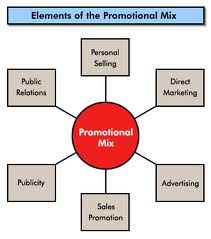Promotion Activity and Advertisement
Advertising is an evolving business function. It was traditionally used to announce the availability of products in customer, brand building, positioning conveying the USP (Unique Selling Proposition) and so on. In recent years, advertising hag undergone a number of significant changes in both strategy and execution. Most of the consumer product companies have come to the stage where they cannot do business without advertising. It used to be said be that advertising was the smartest form of communicating without telling the truth. With the cost of media skyrocketing. and the attention span of the customers shrinking with ad clutter, we cannot blame the advertisers for not giving the entire truth. advertising is a communication tool. In order to be successful. we must develop goals and objectives in keeping with the communication core of advertising Once we have clearly defined the communication goals, we must then adders the role of advertising within the overall marketing strategy of the firm.
The advertising campaign
The campaign may be carried out an advertising agency for a large organization. The important starting point is to have clear objectives as to what is to be achieved. The stages in the advertising campaign set out are in a recommended order.
Identify right timing
Timing of the advertising is crucial. Too before the event, and the customers forget; too late and they have bought something else. Seasonal markets need careful timing. A Media Expenditure Plan should be drawn, detailing at what stags of the campaign the money should be spent, and on which media need to be informed first so that stocks will be in the shops when consumers get to hear about it.
Promotion to the consumer: Advertising media
Promotional communication methods consist of advertising sponsorship, branding. Packaging, publicity. Relations. sales promotions and merchandising. They must not offer conflicting messages. Advertising media must be chosen for its ability to reach the right market segments. Perhaps the most significant role that advertising plays is its advertising is its contribution to the creation of brand preference. If the necessary ingredient for advertising is a brand name, then the key to continued successful advertising is a good product. It goes without saying that no amount of advertising will persuade consumers to repeatedly buy a bad product. The Key to successful advertising is to view a product as a bundle of consumer benefits rather than as a physical commodity. Advertising must communicate messages that address major benefits of a product and communicate realistic benefits of consumers. Examples of primary product consideration in establishing advertising goals are:
- Brand position within a product category. Products priced at the high end of a category will require different advertising strategies just as advertising for now products will differ from their established competitors.
- Product purchase cycle. Obviously. package goods bought on a biweekly cycle. such as groceries will use different advertising approaches than durable goods, such as appliances, which are purchased every 5 ro 10 years.
- Product awareness and market position. Product with high market saturation has a much different marketing strategy than others, and it is reflected in both its advertising budget and its creative approach.
- Product seasonality. For seasonality, Product is marketed differently.
- Short term advertising strategy. Is a particular campaign designed to gain initial consumer trial, encourage higher purchase levels from current customers, or based on the following
Identity the right media
The choice of media is large and rapidly expanding as more TV channels and the new technology of the Internet add to the choice. Selection is therefore critical and must be based in the following:
- Is the cover to be local, regional or national?
- Does the overall cost rule out any medium?
- How many people are reached and at what cost per person?
- Which social group doses the medium reach?
- How often con the message is put over- hourly, daily, weekly etc.?
- Can the message be detailed / how long a life will it have?
- What is the image/status/prestige of the medium?
- How important are sound, movement, color, size?
- Will the results be measurable e.g. Replies to one advertisement?
These are the key questions to be asked when selecting suitable media the lists in the boxes in the diagram have been drawn up in categories in order to help answer this question.
















